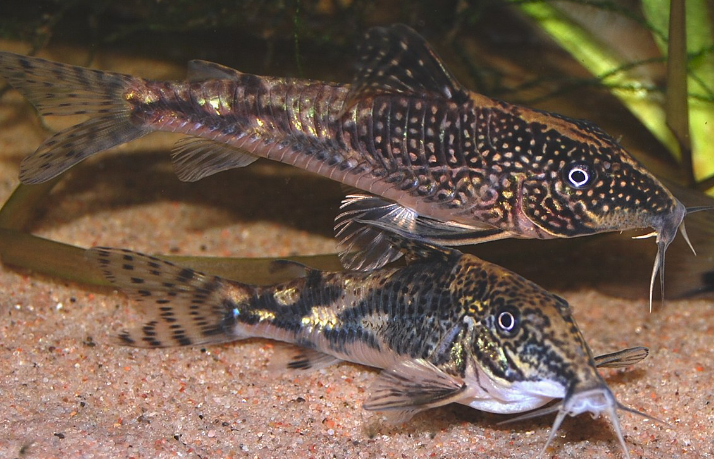Welcome to the fascinating world of aquarium keeping, where each species brings its unique charm to your underwater ecosystem.
If you’re considering adding the delightful Banded Corydoras (Corydoras arcuatus) to your tank, you’re in for a treat! These small, sociable catfish are not only beautiful to look at but also excellent tank cleaners.
In this care guide, we’ll cover everything you need to know to ensure your Banded Corydora thrives in its aquatic home.

Tank Setup for Banded Corydoras
- Tank Size: A minimum of 20 gallons is recommended for a small group of Banded Corydoras.
- Substrate: Use fine sand or smooth gravel to prevent damage to their delicate barbels.
- Decor: Provide hiding spots with caves, plants, and driftwood. These catfish appreciate a well-decorated tank.
Water Parameters:
- Temperature: Keep the water temperature between 72°F and 78°F (22°C to 26°C).
- pH Level: Aim for a pH range of 6.0 to 7.5.
- Water Hardness: Maintain a moderate hardness between 2 to 15 dGH.
Filtration and Aeration:
- Use a reliable aquarium filter to maintain water quality. Banded Corydoras prefer well-oxygenated water, so consider adding an air stone or a sponge filter.
Tank Mates:
- Banded Corydoras are peaceful community fish. Ideal tank mates include other small, non-aggressive species like tetras, guppies, and rasboras.
- Avoid keeping them with larger, aggressive fish that might intimidate or harm them.
Diet:
- Feed a balanced diet including high-quality sinking pellets, flakes, and occasional live or frozen foods like bloodworms or brine shrimp.
- Banded Corydoras are bottom feeders, so make sure their food reaches the substrate.
Social Behavior:
- Banded Corydoras are shoaling fish and should be kept in groups of at least 6 individuals. A larger group promotes their natural behavior and reduces stress.
- They are most active during the night, but will also be active during the day if kept in a well-established and comfortable environment.
Health Care:
- Monitor your Corydoras for signs of illness, such as lethargy, loss of appetite, or abnormal swimming behavior.
- Perform regular water changes to maintain water quality and prevent diseases.
Breeding:
- If conditions are favorable, Banded Corydoras may spawn in the aquarium.
- Provide flat surfaces like broad leaves or smooth rocks for them to deposit their eggs. Separate the eggs or fry to protect them from being eaten by other tank inhabitants.
Observation and Interaction:
- Spend time observing your Banded Corydoras to understand their behavior and ensure they are thriving.
- While they may not be interactive in the same way as some other fish, they are fascinating to watch as they forage and explore.
Conclusion: By providing the right environment, companionship, and nutrition, you can enjoy the delightful presence of Banded Corydoras in your aquarium. Remember, each fish is an individual, so pay attention to their unique preferences and behaviors. Happy fishkeeping!
